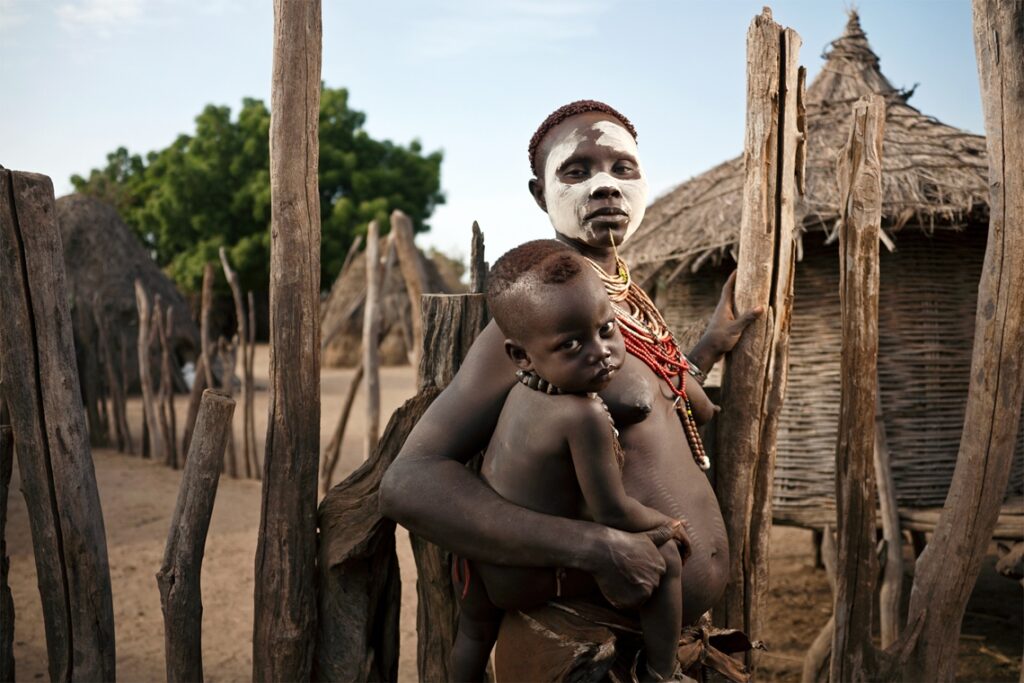Kara Tribe in Omo Valley – Cultural Diversity of Ethiopia
Nestled in the remote and picturesque Omo Valley of southern Ethiopia, the Kara Tribe offers a unique glimpse into one of the world’s most fascinating and diverse cultures. Known for their vibrant traditions, intricate body art, and harmonious relationship with the Omo River, the Kara people provide an unforgettable experience for those seeking to explore the rich tapestry of human heritage. This guide will help you navigate your visit to the Kara Tribe, offering insights into what to see, a bit of history, and practical tips for first-time visitors.
What to See
When visiting the Kara Tribe, you’ll be captivated by their stunning body art and traditional attire. The Kara people are renowned for their elaborate body painting, which they create using natural pigments from the earth. These intricate designs are not only a form of artistic expression but also serve as a means of communication and social identity. As you wander through the village, you’ll notice the vibrant colors and patterns that adorn the skin of the Kara people, each telling a unique story.
In addition to body art, the Kara Tribe is known for their traditional dances and music. These performances are often held during ceremonies and celebrations, providing a lively and engaging way to experience their culture. The rhythmic beats of the drums and the graceful movements of the dancers will leave you mesmerized.
The Omo River, which flows through the heart of the Kara territory, is another highlight of your visit. The river is not only a vital source of sustenance for the Kara people but also a beautiful natural feature that adds to the scenic beauty of the region. You can take a boat ride along the river to enjoy the stunning landscapes and observe the daily life of the Kara people along its banks.
A Bit of History and Interesting Facts
The Kara Tribe is one of the smallest ethnic groups in the Omo Valley, with a population of around 1,500 people. Despite their small numbers, the Kara have managed to preserve their unique cultural identity and traditions over the centuries. They are believed to have migrated to the Omo Valley from the north several hundred years ago, settling along the fertile banks of the Omo River.
One interesting fact about the Kara people is their use of scarification as a form of body art. This practice involves creating intricate patterns on the skin by making small cuts and allowing them to heal, resulting in raised scars. Scarification is often used to mark important life events, such as coming of age or marriage, and is considered a symbol of beauty and strength.
The Kara are also known for their sustainable agricultural practices, which have allowed them to thrive in the challenging environment of the Omo Valley. They cultivate crops such as sorghum and maize, and also engage in fishing and livestock herding to supplement their diet.
How to Get There and Tips for First-Time Visitors
Reaching the Kara Tribe in the Omo Valley can be an adventure in itself, as the region is quite remote and lacks modern infrastructure. The nearest major town is Jinka, which is accessible by a short flight from Addis Ababa, the capital of Ethiopia. From Jinka, you can hire a local guide and a 4×4 vehicle to take you to the Kara villages, which are located about 100 kilometers away. The journey can be challenging due to rough roads, so it’s advisable to travel with an experienced guide who knows the area well.
For first-time visitors, it’s important to approach the Kara people with respect and an open mind. The Kara are welcoming to tourists, but it’s essential to be mindful of their customs and traditions. Always ask for permission before taking photographs, and consider bringing small gifts such as food or school supplies as a gesture of goodwill.
When planning your visit, keep in mind that the best time to travel to the Omo Valley is during the dry season, which runs from June to September. During this time, the roads are more accessible, and the weather is more favorable for exploring the region.
In conclusion, a visit to the Kara Tribe in the Omo Valley offers a rare opportunity to immerse yourself in the rich cultural diversity of Ethiopia. From their stunning body art to their vibrant traditions, the Kara people provide a unique and unforgettable experience for those seeking to explore the world’s cultural heritage.








